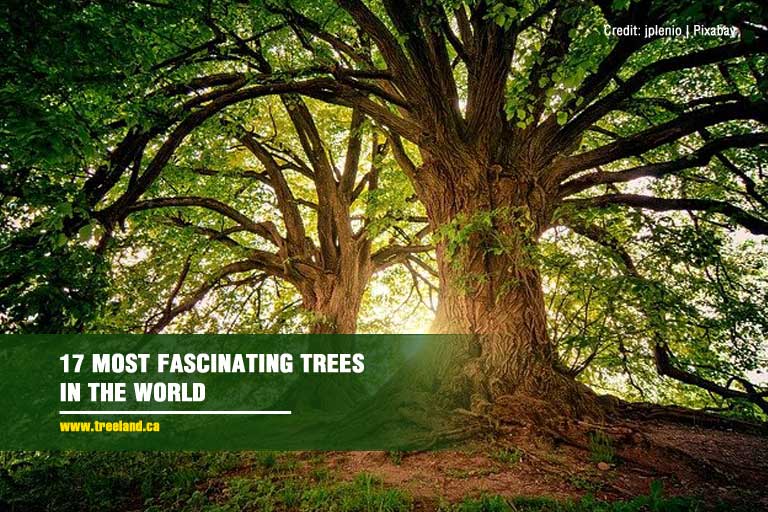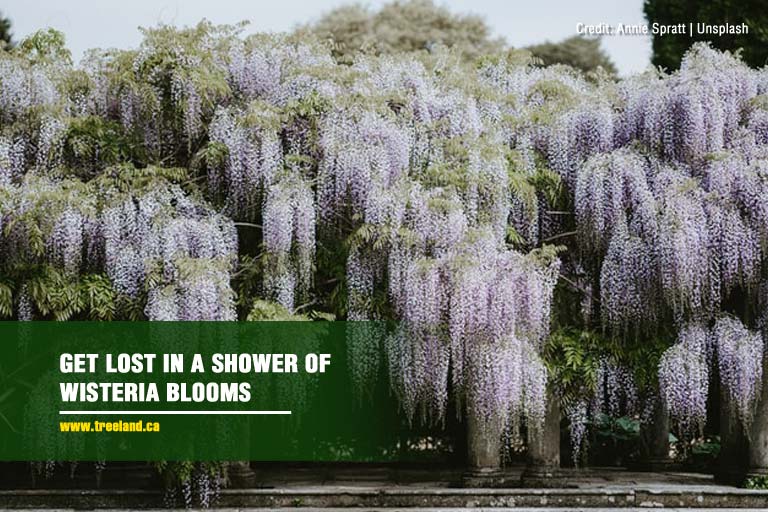
We all know the important role that trees play in our daily lives. Without trees, we wouldn’t have oxygen and fresh, clean air. They also provide us with shelter, food, and even raw materials for medicine. Aside from all of these, trees also add beauty to our surroundings.
Some trees look so amazing that they are highly coveted for their striking features. Landscapers and gardeners would consider these species as beautiful trees to plant. Are you eager to know which trees made the list?
Let us take a look at the 17 most fascinating trees in the world.
1. Dragon Blood Tree

These weird-looking tree species only grow in Yemen’s Socotra Island. It got its name from the dark red resin which looks like thick, dragon blood. Its distinct appearance only adds to its amusing features, as it’s shaped like an upright umbrella. If you like quirky-looking trees, then you’ll surely include this in your list of very beautiful trees.
2. Western Red Cedar
This tree is also referred to as the Giant Cedar, Pacific Cedar, and Shinglewood. Found on Canada’s West Coast, this tree runs down British Columbia and down into the United States. The Western Cedar likes to grow near water and you won’t find it anywhere else. It’s common to see 2 hundred-foot Red Cedars with a diameter of 3 metres. This tree is generally used for totem poles and canoes.
3. Pando Tree
While the Pando tree is easily mistaken for a huge forest, it’s actually a large grove of quaking aspen. It’s considered as the largest single organism and it only has a single underground root system. It weighs around 6 million kilograms and the oldest one is nearly 80,000 years old — one of the oldest known organisms. You can find it in Utah’s Fishlake National Forest.
4. Sugar Maple

This tree is native to Quebec and Ontario and is one of the 10 maple species in Canada. It’s one of the biggest Maples in Canada and produces the distinct leaf found on the Canadian flag. You can also find it on the logo of the hockey team, The Toronto Maple Leafs. During spring, many people harvest its sap for sugar and syrup. The Sugar Maple is truly a remarkable tree.
5. Lodgepole Pine
This handsome native pine is very common in Western Canada and if you have hiked in this area, then you’ve seen huge forests of the Lodgepole. This tree has a long, slender, pole-like trunk with a short, narrow, cone shaped crown. It’s thin, flaky bark comes in colors of orange brown, grey, or black. It starts to produce cones from 6 to 10 years of age. Its cones remain mostly unopened and stay attached to the tree for years. Also called black one, a young Lodgepole tree can be quite ornamental. It’s an important softwood commercial tree and very valuable to wildlife. Sadly, due to logging and climate change, this tree is undergoing a vast reduction in numbers.
6. Paper Birch
Referred to as Saskatchewan’s provincial tree, it is also called the white birch, or canoe birch. Existing close to a century and a half, the Paper Birch covers the map of Canada. This tree doesn’t like humidity and heat, but it can withstand a harsh winter. As its alternate name suggests, many first nations used its trunk to build wigwams and canoes.
#7 White Spruce
This imposing tree covers most of Canada with its delightfully short needles. It’s known for having a highly complex root system and it can find water in most conditions. The White Spruce can also survive droughts. In the UK people use it as decorations.
8. Rocky Mountain Fir

Also known as the Subalpine Fir, the Rocky Mountain Fir ranges from the Yukon area to the US border and it also covers most of British Columbia. It’s typically sold as Christmas trees during the holidays in Canada. Typically used for paper, this tree is very susceptible to climate change. First Nations are known to boil it and use it to promote hair growth.
#9 Flamboyant Tree
This hot-blooded tree originated from Madagascar but spread to various sub-equatorial nations. The aptly-named Flamboyant Tree will survive anywhere there’s enough heat
and will produce vibrant red flowers annually.
10. Red Oak
You’ll only find Red Oaks in a small swath of lower Eastern Canada. It’s also the provincial tree of Prince Edward Island. If you head down the US East Coast, then you’ll also see Red Oaks everywhere. It’s highly sought by furniture makers which makes it a constant target for loggers. The Red Oak’s acorns will not germinate unless you expose it to 4 degrees celsius for 3 months.
11. Blue Jacaranda
This tree got its name from the violet flowers that cover its branches. It might not be as famous as the Japanese Cherry tree, but the more subtle Jacaranda offers an understated look that is simple and elegant.
12. Wisteria Tree

The Wisteria is unlike the most common trees in the world. Instead of getting taller as time goes by, it prefers to move outward thus providing ample shade beneath their flowery boughs. It can be difficult to control but its purple blossoms lend a royal touch to any landscape.
13. Tamarack Larch
The Tamarack Larch can be found propagating across much of Canada except on the West Coast. The word Tamarack translates to “used for snowshoes” in Algonquian. It can survive in cold temperatures as low as -65 degrees celsius and has the distinction of being the tree that surrounds the marvellous Hudson Bay. During the summer months, the Tamarack will produce tiny delicate flowers.
#14 Angel Oak
Oak trees are among the mightiest species in the forest, but they can also be one of the most stunning trees. The Angel Oak has the same hardwood qualities as other oaks, but its branches also spread out like streamers and claws in all directions.
15. Antarctic Beech
The Antarctic Beech can be found in the wet wilds of the southern hemisphere. Only regions that are damp at all times and resistant to fire can cultivate these exquisite trees. You’ll often see it draped in greenery that gives it a rugged and aged appearance.
16. Rainbow Eucalyptus

The bark of this tree is a mixture of greens, blues, reds, oranges, and brown. Its unique leaves wear their stripes naturally which makes it a sight to behold. It grows in New Guinea, Indonesia, and the Philippines where it flourishes in tropical climates that get a lot of rain. It can grow up to 250 feet tall in its native habitat. You can also find Rainbow Eucalyptus trees in certain areas in Texas, Hawaii, California, and Florida.
17. Cannonball Tree
Generally, trees keep their leaves and fruits together at the tips of their branches. However, the Cannonball tree breaks this tradition by bearing its fruits and leaves on its bark. They are planted in gardens because their flowers, arranged on long stalks protruding from the trunk, are huge, mesmerizing, pleasantly aromatic, and very different from any other flower. Its fruits also look like cannonballs. Although the flowers of a cannonball don’t have nectar, bees still visit them for their special kind of pollen.
Are you looking for high quality trees for your home? Caledon Treeland is ready to assist you in choosing the right tree for your garden. Call us: (905)-880-1828 or email us at treeland@treeland.ca to book an appointment and let us help you with your tree needs.
